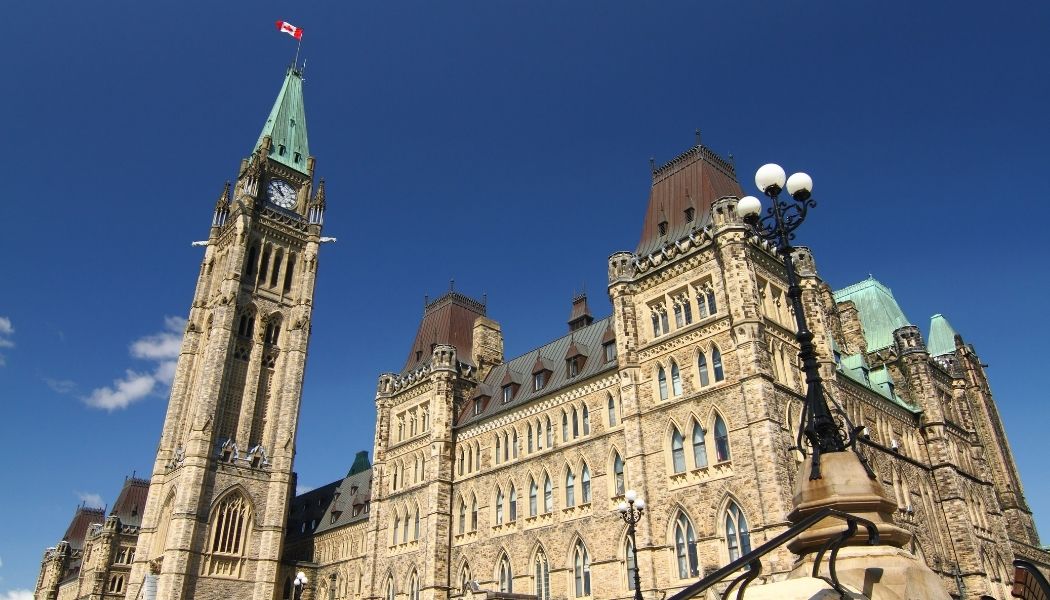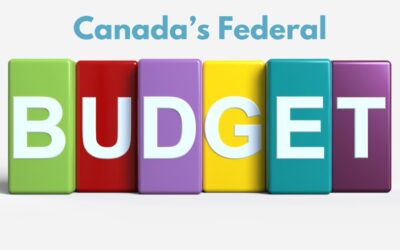This week saw the release of Canada’s federal budget – the first in 2 years. With the pandemic still surging, it was no surprise that a large focus of the budget was on continued recovery spending and stimulus. Most notably, and what’s catching many of the headlines, is the largest single line item in the budget: childcare. It’s a splashy headline indeed, but only one small part of the $101 billion in stimulus spending that makes up the $154 billion budget deficit being presented to Canadians. We’ll take a look at this and other highlights of the budget that may pertain to you, and of course, if there are any details that you have questions about, I invite you to check the budget documentation released here.
“This budget is about finishing the fight against COVID-19. It’s about healing the wounds left by the COVID-19 recession. And it’s about creating more jobs and prosperity for Canadians in the days—and decades—to come.”
Deputy Prime Minister and Minister of Finance, the Honourable Chrystia Freeland
Early Learning & Childcare – $30 Billion over 5 years
This she-cession caused by the pandemic, coupled with children now remote learning more than they’ve been in schools this past year, has exacerbated an already existing issue in Canada – affordable childcare. The federal government is recognizing this and taking the opportunity to propose a nationwide childcare program, which over the next 5 years will reduce the average childcare cost to only $10 per day per child. For those spending an equivalent mortgage payment each month on childcare, this can’t come soon enough and the freed-up cash flow will have a visible ripple effect on the Canadian economy, which is not lost on this government. The feds can’t do it alone, however, and they will be leaning on the provinces and territories to also be helping with the costs of such a robust national program. So with the 5-year goal to $10 per day, you may be looking at your children’s ages and doing some math, but don’t worry – the government’s goal is to reduce childcare costs by half in the next year.
Pandemic Recovery Benefits Extended
No surprise here – the government has little choice but to push these deadlines further into the calendar year, but with an effort to wean these programs out. Here’s a look:
Canada Recovery Benefits – CRB, CRSB, CRCB
- Extended 12 weeks, ending September 25, 2021
- Benefit will reduce to $300 weekly (gross) for the remaining 8 weeks of the program, for those who have received all 50 weeks of benefit
- If you had to repay any or all of the benefit, you can now do that in the year you received the benefit, or the year you file/claim the benefit (previously CRA was requiring you to pay back 2020 benefits before December 31, 2020)
Canada Emergency Wage Subsidy (CEWS) – $10.1 billion
- Extended 12 weeks to 50 weeks, ending September 25, 2021
- Benefit will reduce from July 4 from its current maximum per employee of $847 to $226, and only businesses with revenue declines of more than 10% will qualify past July 4
NEW Program: Canada Hiring Recovery Program (CHRP) – $595 million
This new plan is set to coordinate with the existing CEWS, but to support new hires, increases in wages, or increases in hours. This new program will run from June 6 to November 20, 2021, and will cover as much as 50% of pay increments. This program is not meant to bring back laid-off employees (that’s CEWS job) but will help bolster existing workers and create new jobs.
Rent Relief and Lockdown Program extended to September 25, 2021
Canada Emergency Business Account (CEBA) remains unchanged except the deadline for applications has been extended to June 30, 2021. This program offers up to $60,000 in interest-free loans to eligible businesses, through their financial institution and guaranteed by the federal government, with up to $20,000 of the loan forgivable if the remaining balance is paid by the deadline of December 31, 2022.
Students & Seniors
There truly is a little something for everyone in this budget, and students and seniors specifically can take note:
Student loan program changes include the ability to defer any interest until March 31, 2023; repayment assistance if income is equal to or less than $40,000 (previously the threshold was only $25,000), and; a cap on monthly payments equal to only 10% of income (down from 20%).
Seniors aged 75+ will receive automatic increases to their Old Age Security benefit, including a bump of 10% in the next benefit period starting July, and a one-time $500 benefit in June 2022.
Mental Health and Health Care investment
Eligibility will be expanded for those looking to take advantage of the disability tax credit, to include an expansion of mental functions necessary for everyday life, a well as recognizing more activities in determining time spent on life-sustaining therapy to reduce, which will help to qualify more Canadians for the credit.
The budget will also allocate $257 million over the next 5 years to developing new mental health standards, setting up services for racialized communities and those hardest hit by the pandemic, and for trauma and post-traumatic stress disorder programs.
Another area that’s been hard hit by the pandemic, and heavily scrutinized, is Canada’s long-term care services. This budget proposes an additional $3 billion over the next 5 years to “ ensuring the standards of long-term care are applied and permanent changes are made.”
Housing
While there was much speculation prior to the budget release about there being additional taxes and fees imposed around housing, the budget only included a proposal to implement a 1% of the property value vacancy tax on foreign-owned properties effective January 1, 2022. This is expected to generate $700 million in additional revenue, however there are some reports indicating that 1% may not be enough of an incentive for a foreign owner to make their property available for rent.
Additional focus on addressing the housing shortage remained present in this budget, proposing to send $2.5 billion to Canadian Mortgage Housing Corporation (CMHC) for initiatives including the construction of affordable housing units, and plans to allocate a further $1.3 billion to programs that include converting vacant office space (which will only be increased as a result of the pandemic) to housing units.
Energy & Environment
Seen as a way to not only bolster the economy but incentivize Canadians to take green steps, the CMHC is to receive funds for a homeowner loan program, with loans up to $40,000, to retrofit their homes for energy efficiency over the next 5 years. Additional spending over a total of 43 programs will total $8.75 billion over 5 years, aimed at developing green technologies, and preserving the environment.
Your tax return currently has the Climate Action Incentive tax credit in Ontario (as well as Alberta, Saskatchewan, and Manitoba). This will be moving from a single annual tax credit to quarterly payments in 2022, similar to your HST credit you may currently be receiving.
Additional Measures
There are plenty of programs outlined in the budget, but many don’t affect the average Canadian. Of note, here are some highlights:
- Luxury tax: for those who are purchasing an automobile over $100,000 or boat over $250,00 after December 31, 2021, will be subject to a luxury tax equal to the lesser of 20% of the value above the threshold, and 10% of the full value
- Vape & tobacco tax: though no specific rates and increases have been released, the government noted its intention to begin taxing vaping products such as e-cigarettes, and increase the current tax on tobacco products
- National minimum wage raised to $15 per hour
- $18 billion in indigenous community support, spanning from education to entrepreneurship, and improving health outcomes. Almost $6 billion of that is earmarked for the Indigenous Community Infrastructure Fund which supports immediate demands and will include addressing the number of boil-water advisories in First Nations.
- $116 million over 2 years to address the opioid crisis, and support harm reduction, treatment, and community prevention programs
- $960 million over 3 years invested in enhanced workforce training, with an additional $470 million over 3 years for apprenticeship and trade programs
- CRA investing in enhancing their services, including a reduction in processing times for adjustments to returns. There will also be $230 million directed to CRA over 5 years to improve its ability to collect outstanding taxes. Goal: to collect an additional $5 billion in outstanding taxes over 5 years – so you don’t want to be owing any taxes in the upcoming years
While there was speculation prior to the budget release around increasing the capital gains tax, or including a “wealth tax”, we saw nothing of that in this budget, but rather a continuation of the pandemic stimulus spending measures, bringing Canada’s bill to roughly $500 billion in 2 years.
Questions about specific items in the budget and how it may affect you, or just want to chat about your personal financial goals? Let’s connect.





0 Comments